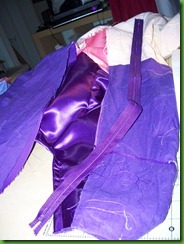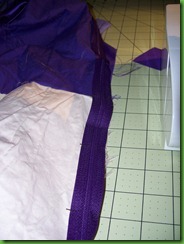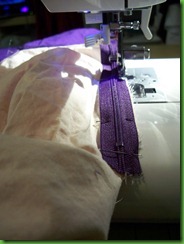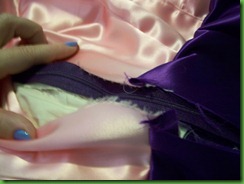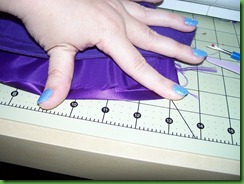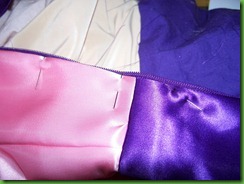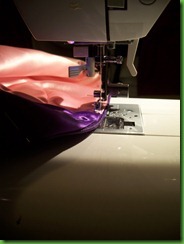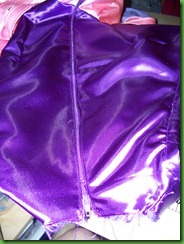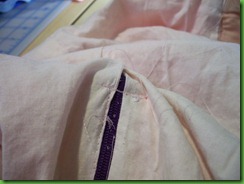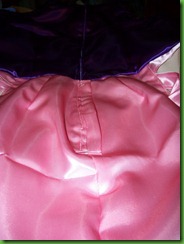 So, I decided to cosplay Mai from Avatar: The Last Airbender. Her costume is all sorts of weird. The weirdest is her hair. It has what on first look is 2 little buns, one big bun and 2 pony tails coming from the back.
So, I decided to cosplay Mai from Avatar: The Last Airbender. Her costume is all sorts of weird. The weirdest is her hair. It has what on first look is 2 little buns, one big bun and 2 pony tails coming from the back.
You can see here the issues that would be facing me making this wig. On closer inspection I determined that I only needed to make one bun and could do the 2 smaller bun like shapes with hair loops. Like they would be made with real hair. The style is called Ox Horns, and is a common Chinese style.
Gathering the materials:
Materials Needed:
A Base Wig
Extensions
Foam Structure for Bun
Needles: Straight and Curved
Thread: Heavy Duty Button or Upholstery
Black Paint or Black Fabric
Glue/Caulk
Hairspray
Blow-dryer
Wig head
Stand
Scissors: Sharp, short pointed ones
Rubber Bands
Plyers
I bought all my wig stuff from http://shop.cosplay.com/. I used a New Look Linda in Black for the base wig. For the rest of the wig I bought 2 New Look Clip-On SXL’s in black. I have most of one left over. For the inside of the bun structure I used a 3inch green Styrofoam ball from Joann’s. I use glue instead of caulk for making wigs because I do not want to put caulk near my head. The glue I have found to work the best is Aleene’s Tacky Glue. I love that stuff for all crafting projects. The hairspray I use is Got2b Glued Blasting Freeze Spray. Amazing stuff, I like it better than Aquanet.
Getting Started:
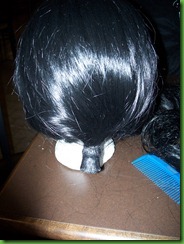 Put the base wig up into a low ponytail:
Put the base wig up into a low ponytail:
I carefully gathered the hair into a low ponytail that sits about an inch above the back of the wig. Leaving out the pieces for the sideburns and the bangs. Careful to not pull the wig too tight, so as to not make it to small. To do this I Usually pad out a wig head to my head measurements with cotton batting and fabric pinned to the wig head. I then tightly bound the ponytail and cut it short. Then I sealed it with glue, working glue down into the ponytail stump to seal the fibers together.
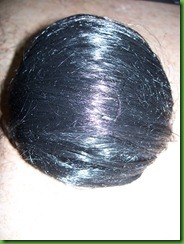 Make an Odango/Bun:
Make an Odango/Bun:
I followed Kukkii-san from Cosplay.com’s Odango tutorial, sort of. I carved out the foam ball and then covered it with glue and black fabric, instead of paint. Then I took one of the clip-on ponytails and took the clip out of it and stretched the wefted end as far around the ball as I could and glued it down. 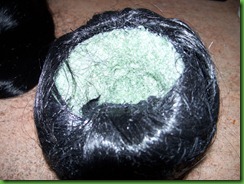 Then I pulled the fibers around the ball and cut them to the right length.Then I hairsprayed the fibers until they glued themselves to the ball. I then covered the ends inside the ball with more black fabric and glue to hold them in place.
Then I pulled the fibers around the ball and cut them to the right length.Then I hairsprayed the fibers until they glued themselves to the ball. I then covered the ends inside the ball with more black fabric and glue to hold them in place.
 Make 2 Hair Loops for the “Ox Horns”:
Make 2 Hair Loops for the “Ox Horns”:
I started by taking a bundle of fibers about as big around as my finger and about 5-6 inches long and stubbing both ends. I bound each end really tight ly and sealed them with glue, working glue down into the fibers to hold them together. Make 2 of these. 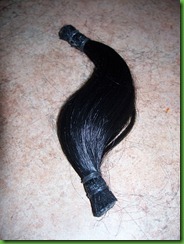 Then, when the stubs were dry I stitched the ends together to make the loops.
Then, when the stubs were dry I stitched the ends together to make the loops.
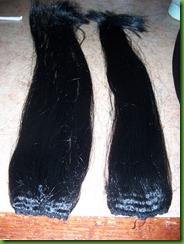 Separate out some wefts for the 2 tails:
Separate out some wefts for the 2 tails:
I took apart the other clip-on and cut out about 4 wefts for each tail.
Putting it all together:
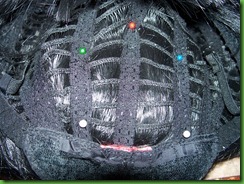 Attach the Odango to the ponytail stub:
Attach the Odango to the ponytail stub:
First I pinned the odango in place from the inside of the wig. Then, using my curved needle I sewed the odango to all the places I had put a pin. I needed plyers to pull the needle through the odango.
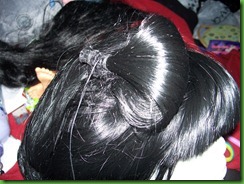 Attach the “Ox Horns”:
Attach the “Ox Horns”:
First I sewed down the ends of the loops, pointing to the back of the wig. I needed plyers here to pull the needle through the stubs. The loop should be flat to the top of the wig.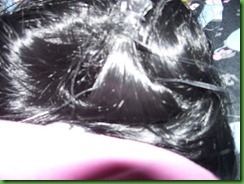
Then I passed a loop of thread through the fiber loop and pulled it to the back of the stubs. Then stitched that down to the wig.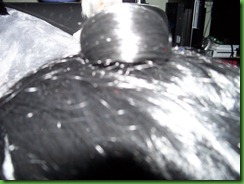 Pulling the fiber loop around the
Pulling the fiber loop around the
stubs to cover them. And pulling the fiber tight to the wig.
 Attach the tails:
Attach the tails:
I sewed the wefts down to the back edge of the wig. One to each side of the center seam. 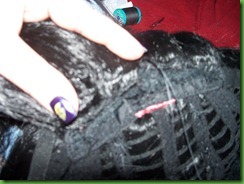
Using heavy duty thread and large whip stitches. I stitched back and forth.
Finishing Touches:
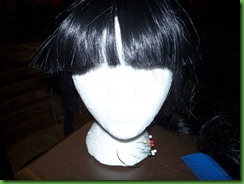 Cut the Bangs and Sideburns:
Cut the Bangs and Sideburns:
I had a friend help me with this. She cut them while I was wearing the wig to get the bangs to the right length—just at the eyebrows. The sideburns I cut just below my ears.
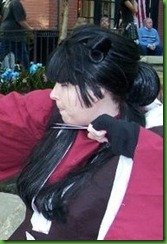 Cut the Tails to length:
Cut the Tails to length:
I cut the tails to the right length while wearing the wig.
Now Go Fight!!





